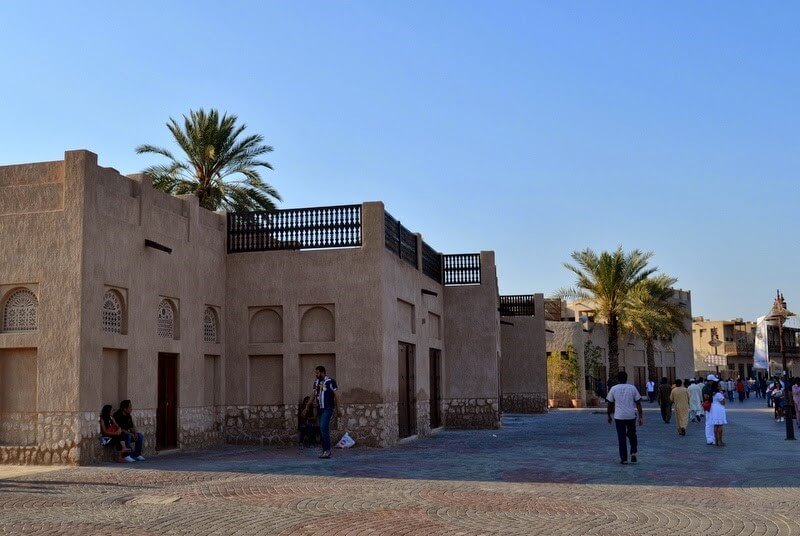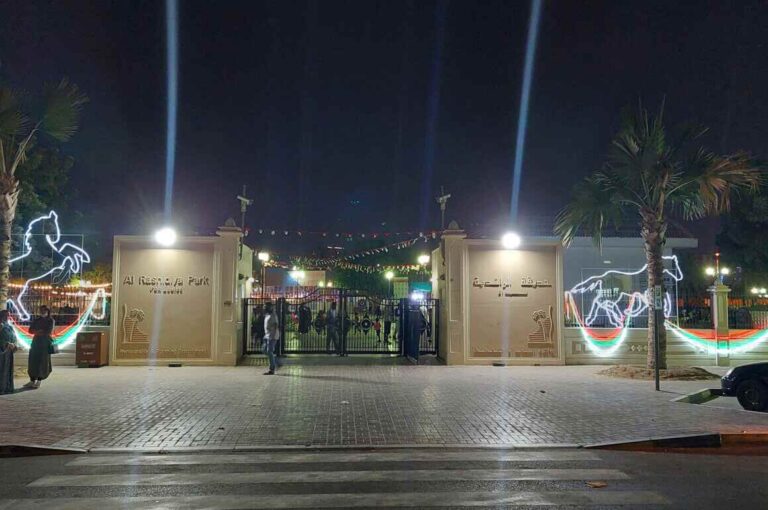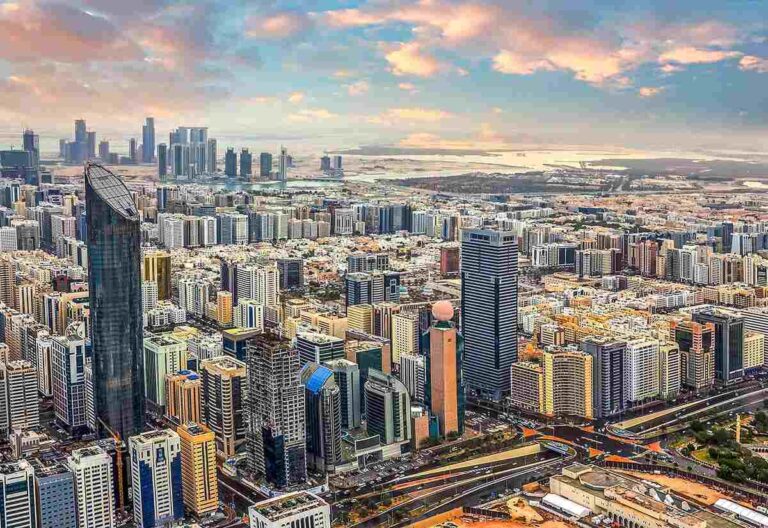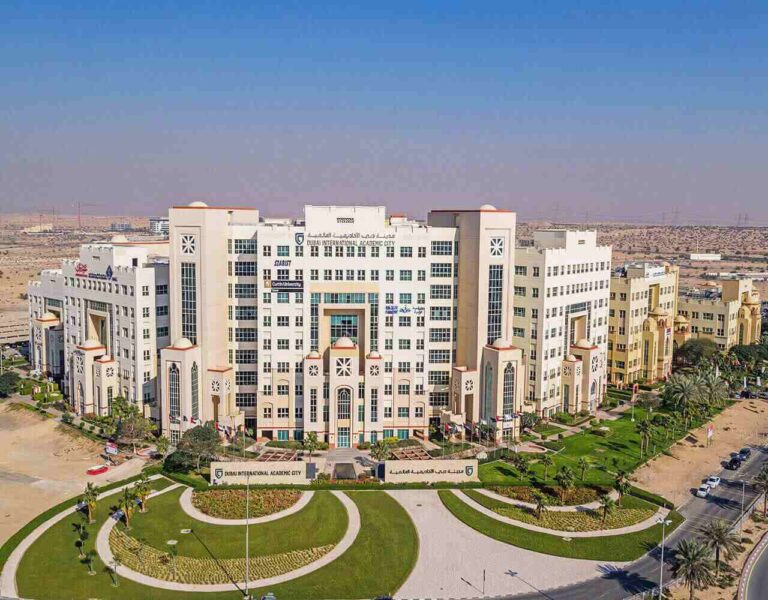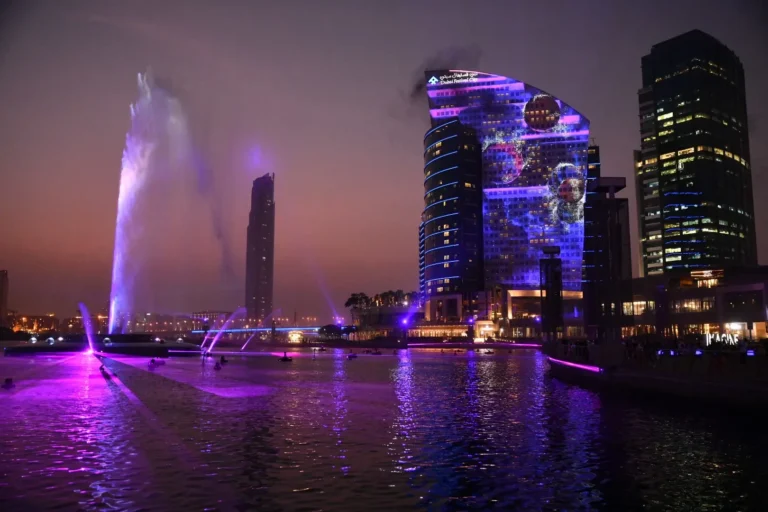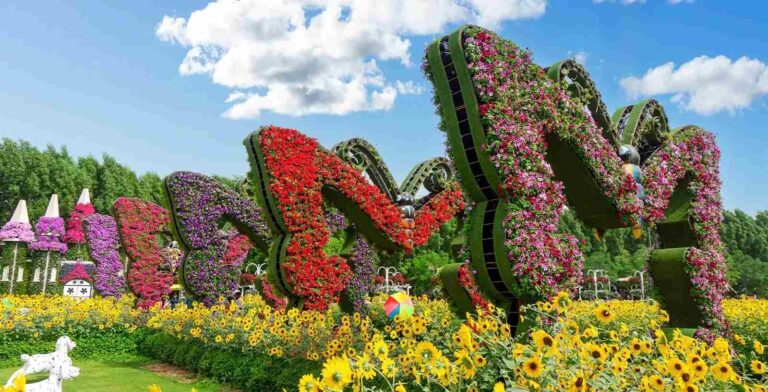Al Shindagha, Dubai, UAE – A Living Tapestry of Heritage, Innovation, and Timeless Architecture
Standing on the edge of Dubai Creek, across from Deira’s bustling souks and alongside the contemporary pace of Bur Dubai, lies Al Shindagha—a district where the roots of Dubai’s meteoric rise are not only remembered but restored, retold, and reimagined.
What makes Al Shindagha remarkable isn’t just its history—it’s the way this district acts as a living museum, breathing new life into centuries-old architecture while preserving the soul of Emirati tradition. Here, wind towers (barajeel) rise above coral-clad homes, alleyways wind like the stories of traders and pearl divers, and the House of Sheikh Saeed Al Maktoum anchors Dubai’s historic identity in physical form.
Where is Al Shindagha Located?
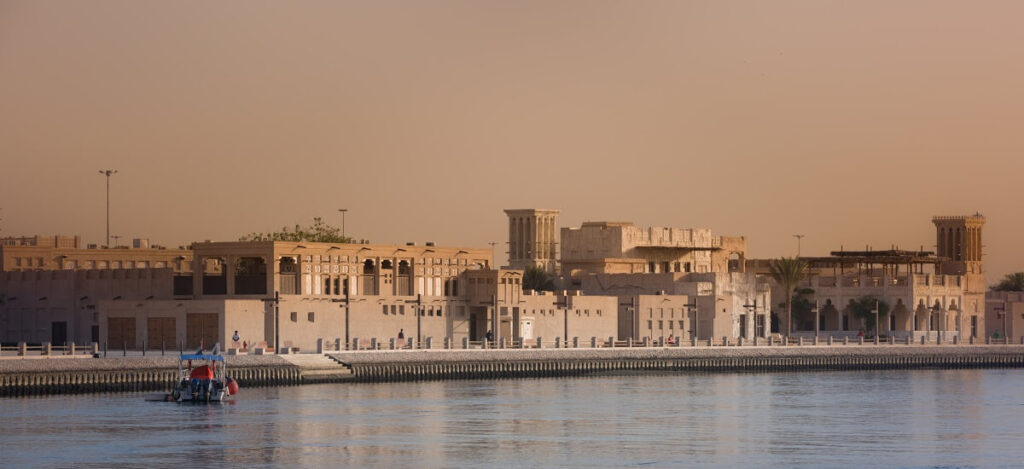
Al Shindagha sits in Bur Dubai, bordered by Port Rashid, Al Fahidi, and the historic Dubai Creek. It connects seamlessly with the rest of the city via Al Khaleej Road (D92) and the Al Shindagha Tunnel, which links Bur Dubai with Deira—bridging not only geography, but generations of Dubai’s story.
🚇 Al Ghubaiba Metro Station, located within Al Shindagha, provides access to Dubai’s Green Line, while Al Ghubaiba Bus Station serves as a hub for intercity and local routes—including buses to Abu Dhabi, Sharjah, and Al Ain. The nearby Al Ghubaiba Marine Station also allows for ferry travel across the Creek.
Al Shindagha Museum: More Than a Museum
The Al Shindagha Museum, the crown jewel of the district, is not a single structure but a sprawling open-air heritage complex spread across 169,000 square meters, encompassing over 160 restored buildings. This isn’t just a museum—it’s a curated immersion into the cultural soul of Dubai.
Key Highlights:
- The House of Sheikh Saeed Al Maktoum: Built in 1896, this iconic residence once housed Dubai’s ruler from 1912–1958. Restored in 1986, it now forms the heart of the museum and narrates the lineage and leadership of the Al Maktoum family.
- Thematic Pavilions: Explore pavilions dedicated to perfume-making, traditional crafts, navigation and trade, and oral storytelling—each spotlighting Emirati ingenuity and the region’s connections with Africa, Persia, and the Indian subcontinent.
- Architecture: Traditional materials such as palm fronds, sandalwood, teak, gypsum, and coral stone are woven into the very buildings—demonstrating Dubai’s sustainable past long before sustainability was a global trend.
Why Al Shindagha Matters to Dubai’s Identity
Long before the skyline filled with glass towers, Al Shindagha was home to Maktoum bin Butti, leader of the Bani Yas tribe, who settled here in 1833 and established what would become modern Dubai. It was from here that Dubai declared independence from Abu Dhabi, marking the birth of a city-state that would one day captivate the world.
The district’s organic urban layout—with its interwoven sikkas (alleys) and public courtyards—showcases the collective spirit of the past: cooperation, community, and commerce.
Retail Revival: City Centre Al Shindagha
In 2016, City Centre Al Shindagha added a modern retail flair to the district, drawing both tourists and residents. Anchored by global brands, local dining options, and a cinema complex, the mall provides a convenient counterpoint to the historic streets—proof that old and new can thrive side-by-side in Dubai.
Hotels Near Al Shindagha: Where to Stay
Whether you want to wake up to the view of Dubai Creek or stay close to cultural landmarks, Al Shindagha’s location offers a variety of accommodation options:
Featured Stay:
Barjeel Heritage Guest House
- Arabian architecture with wind towers
- 11 air-conditioned rooms with traditional décor
- Located creekside, just steps from history
Nearby Hotels in Bur Dubai:
- Queen Elizabeth 2 Hotel (Mina Rashid): A historic 13-deck ocean liner turned 4-star hotel, with 215 refurbished rooms, nightlife venues, and event spaces
- Howard Johnson by Wyndham, Royal Ascot Hotel, Astoria Hotel, Fortune Grand Hotel Apartments – All within 10 minutes’ drive from Al Shindagha, offering comfort across various budgets
Architectural Character: Wind Towers, Coral Walls, and Desert Functionality
Al Shindagha’s architecture isn’t just beautiful—it’s brilliant. The barajeel, or wind towers, are ingenious structures that acted as natural air conditioners, funneling breeze into homes long before electricity. Buildings are oriented to encourage shade and breeze, while materials like palm trunks and gypsum offer natural insulation.
These traditional design techniques, perfected over centuries, reflect a deep harmony between architecture and the desert environment—and stand in striking contrast to the glass skyscrapers nearby.
Explore More of Historic Dubai
Just steps from Al Shindagha, you can visit:
- Al Fahidi Historical Neighbourhood: Another preserved area known for its museums and art galleries
- Dubai Museum (Al Fahidi Fort): Offers a broader look into Dubai’s evolution
- TheDubaiWeb.com’s Travel Guides: Explore curated itineraries and insider tips on navigating Dubai’s heritage zones
FAQ: Al Shindagha, Dubai
What is the historical significance of Al Shindagha?
Al Shindagha is the birthplace of modern Dubai. It was home to Sheikh Saeed bin Maktoum and the Maktoum dynasty, marking the city’s emergence as a trading and political hub.
Is Al Shindagha Museum worth visiting?
Absolutely. The museum offers interactive exhibits and traditional pavilions that showcase everything from Emirati perfumery to pearl diving, all housed within authentic, restored architecture.
Can you stay overnight in Al Shindagha?
There are no residential properties within the heritage site itself, but accommodations like the Barjeel Heritage Guest House and nearby hotels in Bur Dubai offer excellent access.
How can I reach Al Shindagha by public transport?
Take the Dubai Metro Green Line to Al Ghubaiba Station, or catch intercity buses from Al Ghubaiba Bus Station. Water transport via the Dubai Ferry is also available at Al Ghubaiba Marine Station.
What is the best time to visit Al Shindagha?
Visit during the cooler months from October to April for the best walking conditions through the open-air museum and traditional alleyways.
Final Thoughts
Al Shindagha is more than a heritage site—it is Dubai’s living archive, where stories of migration, leadership, architecture, trade, and innovation converge. It reminds us that before the megaprojects and high-rises, there were wind towers, dhow harbors, and families weaving a city from the sand up.
For a deeper look at Dubai’s heritage and lifestyle, explore our other curated guides at TheDubaiWeb.com—your source for authentic local insights, travel tips, and cultural experiences in the UAE.
- Al Nahda 2 Postal Code, UAE – Complete & Accurate Guide (Dubai) - December 29, 2025
- La Mer Beach Dubai Guide – Free Entry, Things to Do & Best Time to Visit - December 28, 2025
- Umm Suqeim Night Swimming Beach Dubai, UAE - December 28, 2025

